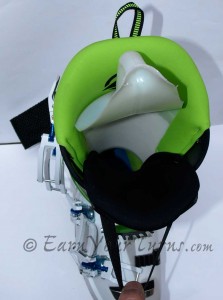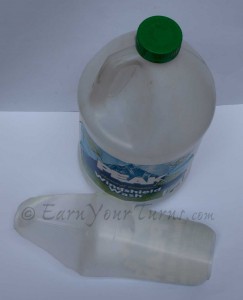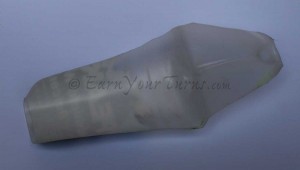
Can’t get your foot around the corner of the tongue? Try a slip of plastic, a boot horn, to reduce binding friction.
One of the most common problems skiers experience is the simple act of getting in to their boots. This is especially true when the boot is cold and has an overlapping tongue design. Plastic ski boots do get stiffer as they get colder and if you left them in the car overnight you’re sure to be cursing as you try to pry them apart to stuff your feet in them.
It happened to me last February while testing a bunch of ski gear at the demo days at Alpine Meadows, sponsored by the WWSRA. Fortunately I had two pair of boots to chose from, so when I found that I simply could not jam my feet into my Lange XT‘s, I opted for the Scarpa Maestrale‘s with a tongue that hinges open and completely out of the way.
The solution for getting in to the XT’s at the moment was to stick them on the front dash of the car and let them warm in the sun while I took a few runs to test skis rigged with Dynafiddle bindings. An hour later the XT’s were nice and pliable and easy to get my foot in. But what if it had been a stormy day?
Another option is to get a can of silicon spray and apply a good mist to the inside of your liner to reduce the binding friction between your socks and the liner. Again, this works but isn’t the most environmentally friendly method, and if you need this a lot you’ll be chipping away at your apres’ ski budge for pizza and beer not to mention soaking your liners with silicon which can’t be good in the long run.

You can make a boot horn from a simple one gallon plastic jug. For more length, get a taller jug, like a 5-gallon pail.
© 2013


1 pings